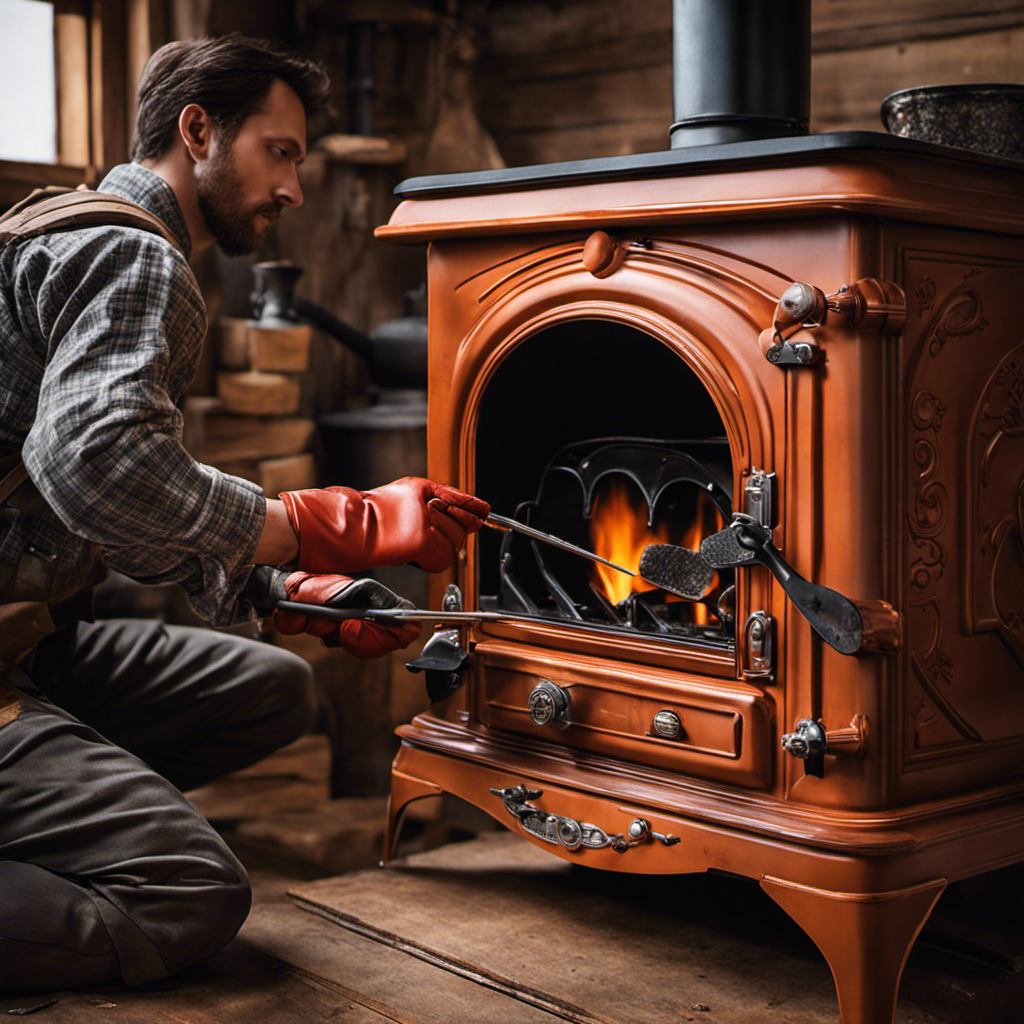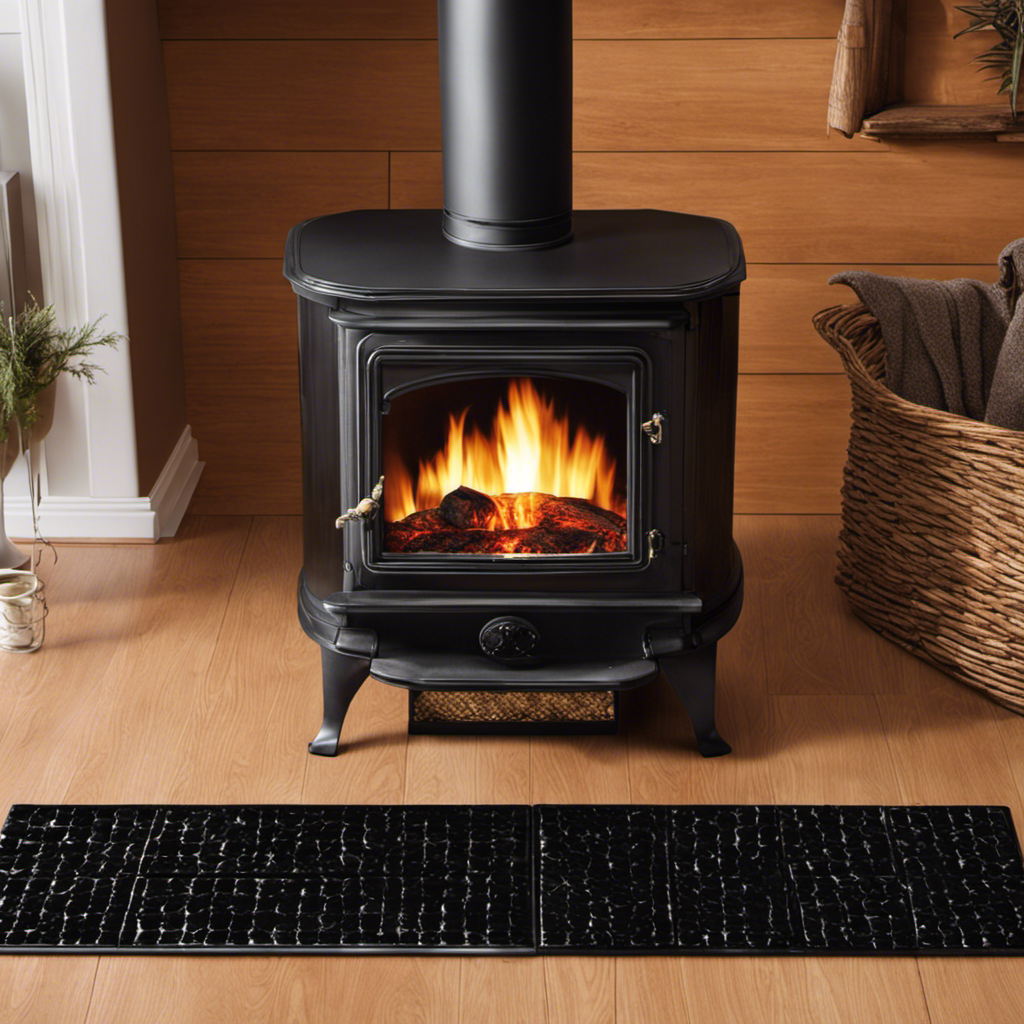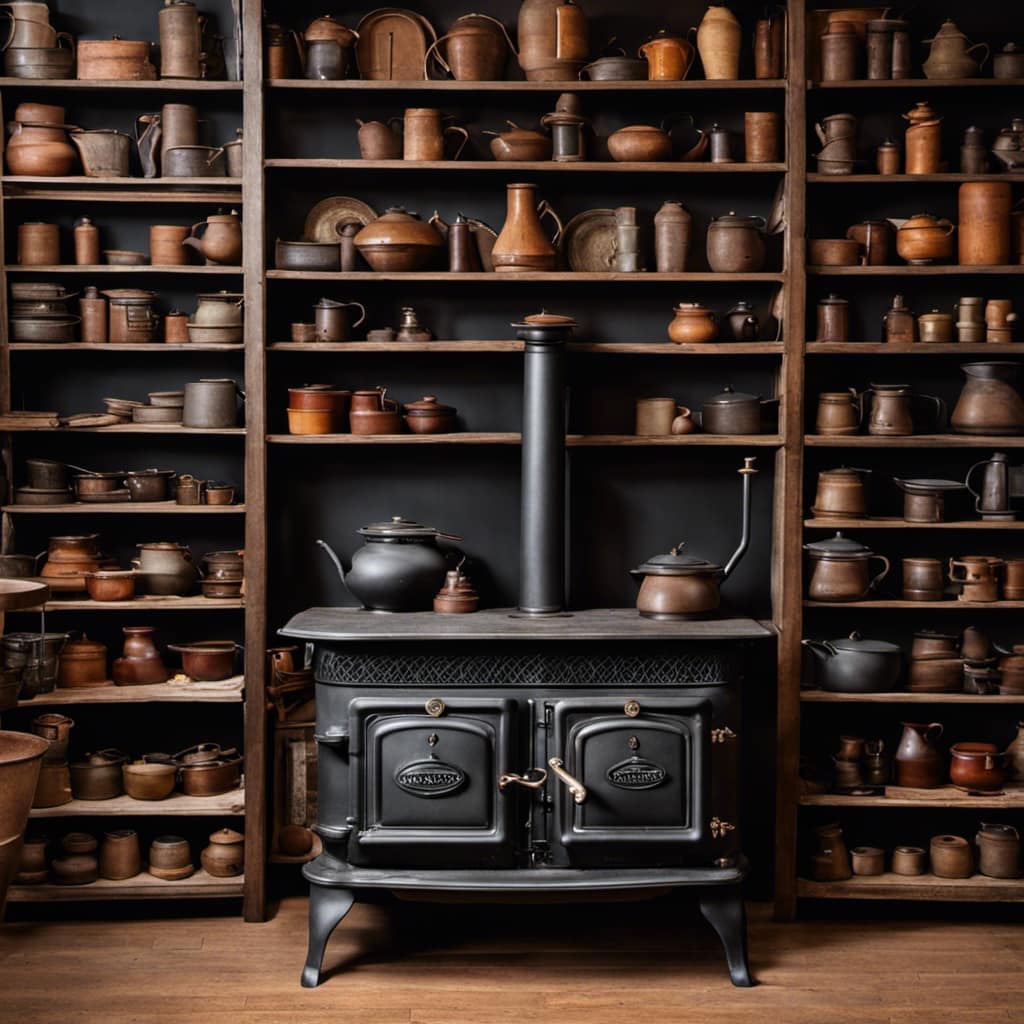
I have always been fascinated by how a wood stove can efficiently warm up a room without using a blower. It’s almost like magic, but there is a captivating scientific explanation for it. Discover the secrets behind this incredible heating method and learn how it works. Explore the world of wood stoves and be amazed by what you’ll find!
In this article, I’ll delve into the factors that affect the effectiveness of wood stove heating and share tips on maximizing heat circulation in your home. So, if you’re looking to enhance the warmth of your space without a blower, keep reading!
Key Takeaways
- Wood stoves distribute heat through convection and heat transfer mechanisms.
- The placement of the stove in a central location maximizes heat distribution.
- Using heat-resistant materials like ceramic tiles or heat shields can prevent heat loss through walls.
- Heat-powered stove fans can be used to distribute warm air throughout the room without a blower.
The Science Behind Wood Stove Heat Distribution
I find it fascinating how wood stoves distribute heat without the use of a blower. The key to this efficient heat distribution lies in the principles of convection and different heat transfer mechanisms.
When wood burns in a stove, it produces hot gases and smoke. These rise upward due to their lower density, creating a natural convection current. As these gases pass through the stove’s internal chambers, they transfer heat to the metal walls, which then radiate that heat into the surrounding space.

Additionally, the stove’s design often includes baffles or heat exchange tubes that increase the contact between the hot gases and the metal surfaces, enhancing heat transfer. This combination of convection and heat transfer mechanisms allows wood stoves to effectively distribute warmth throughout a room without the need for a blower.
Factors Affecting the Effectiveness of Wood Stove Heating
One factor that affects the effectiveness of heating with a wood stove is the insulation of the room. Proper insulation is crucial for retaining the heat generated by the wood stove. If the room is poorly insulated, a significant amount of heat can escape through walls, windows, and doors, resulting in less efficient heating.
Another factor that affects wood stove efficiency is the size and design of the stove itself. A properly sized stove that matches the heating requirements of the room will ensure optimal performance.
Additionally, the placement of the stove within the room is important. It should be positioned in a central location to maximize heat distribution.

Lastly, the importance of proper wood stove installation can’t be overstated. A correctly installed stove will operate safely and efficiently, reducing the risk of fire hazards and optimizing heat output.
Maximizing Heat Circulation in Your Home With a Wood Stove
To optimize heat circulation in my home with a wood stove, I ensure that the stove is positioned in a central location. This allows for heat to radiate evenly throughout the space.
One of the key factors in efficient wood stove heating is heat convection. As the fire burns, hot air rises and escapes through the chimney, creating a natural convection current. This movement of warm air helps distribute heat throughout the room.
Additionally, I make use of natural conduction to maximize heat circulation. By placing heat-resistant materials, such as ceramic tiles or a heat shield, behind the stove, I can prevent heat loss through the walls and redirect it into the room.

This helps to ensure that the heat generated by the wood stove is efficiently utilized to warm the entire space.
Enhancing Heat Distribution Without a Blower on Your Wood Stove
Enhancing heat distribution in my home is crucial, even without a blower on my wood stove. While a blower can help circulate warm air more efficiently, there are alternative methods to increase the efficiency of heat distribution.
One option is to use a heat-powered stove fan. These fans work by converting the heat from the stove into electricity, which then powers the fan to distribute the warm air throughout the room.
Another method is to strategically place fans around the room to help push the warm air towards colder areas. Additionally, using a heat-resistant barrier, such as a heat reflector or a stove board, behind the wood stove can help redirect the heat towards the desired areas.

By implementing these alternative heating methods, I can effectively distribute heat in my home, even without a blower on my wood stove.
Now, let’s move on to some tips for efficiently heating a space with a blower-less wood stove.
Tips for Efficiently Heating a Space With a Blower-Less Wood Stove
Using a heat-resistant barrier behind my wood stove helps redirect warm air towards desired areas. This simple technique is just one of the many tips I’ve discovered for efficiently heating a space with a blower-less wood stove.
Here are some other strategies that have helped me stay warm and cozy during the colder months:
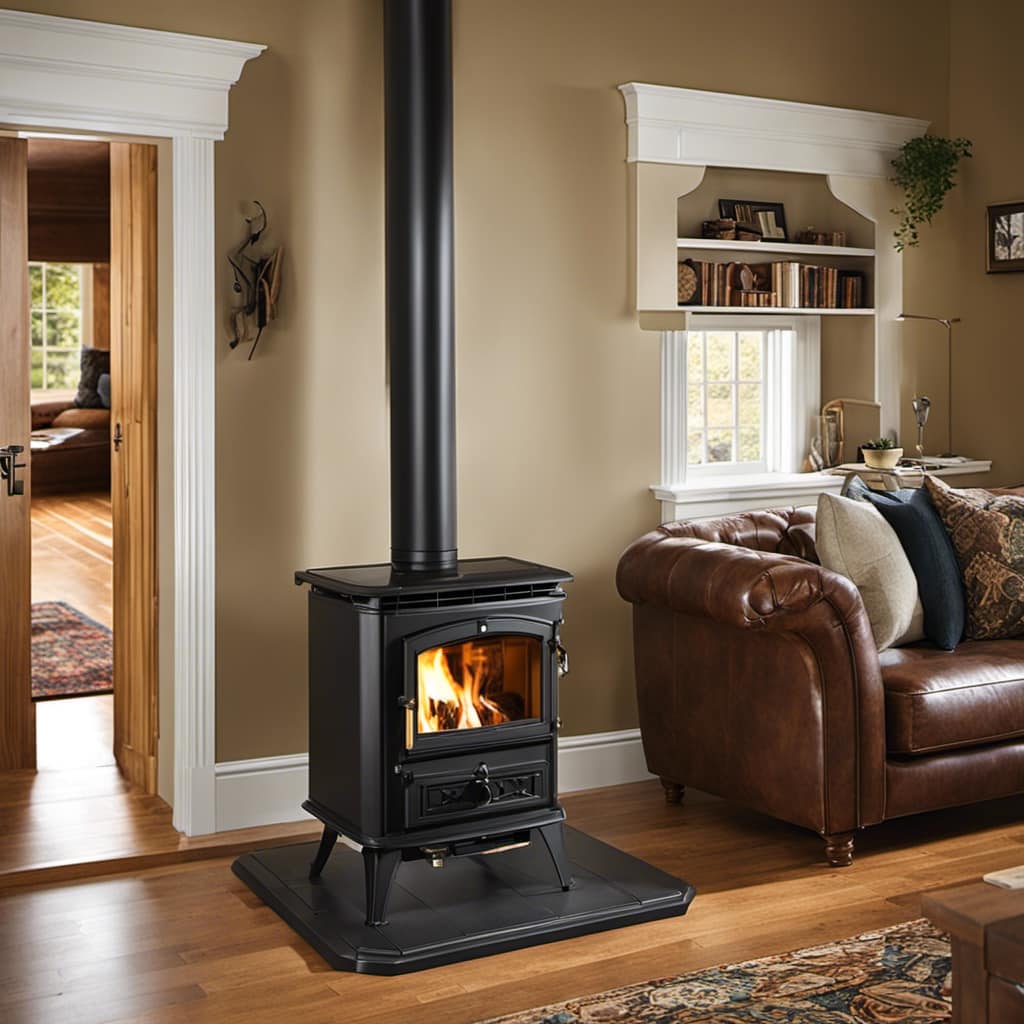
-
Proper Wood Stove Maintenance:
-
Regularly clean the stove and chimney to ensure efficient burning and prevent buildup of creosote.
-
Check for any cracks or leaks in the stove’s seals and gaskets, and repair or replace them as needed.
-
Explore Alternative Heating Methods:

-
Supplement your wood stove with other heating sources like electric space heaters or radiant floor heating.
-
Consider using a heat-powered fan that circulates warm air throughout the room without requiring electricity.
Frequently Asked Questions
What Are Some Alternative Methods for Distributing Heat From a Wood Stove Without Using a Blower?
There are alternative methods for distributing heat from a wood stove without using a blower. Heat convection through natural air circulation is one option. Another option is using heat activated fans or heat transfer kits.
Can a Wood Stove Effectively Heat a Large Space Without a Blower?
Yes, a wood stove can effectively heat a large space without a blower. Alternative heating methods like radiant heat and convection allow the stove to efficiently distribute warmth throughout the room.

Are There Any Disadvantages to Using a Wood Stove Without a Blower?
There are a few disadvantages to using a wood stove without a blower. Without proper circulation, heat distribution might be uneven, and it could take longer to warm up the space. Additionally, there may be safety concerns regarding potential overheating or fire hazards.
How Can I Improve the Heat Distribution in My Home When Using a Wood Stove Without a Blower?
To improve heat distribution in my home with a wood stove and no blower, I can use heat resistant tiles to create a heat barrier and a heat powered fan to circulate warm air more effectively.
Are There Any Safety Concerns to Consider When Using a Wood Stove Without a Blower?
There are safety concerns to consider when using a wood stove without a blower. It’s important to ensure proper ventilation, monitor the stove for overheating, and keep flammable items away. Regular maintenance is also crucial for safe wood stove heating.
Conclusion
In conclusion, a wood stove without a blower has the incredible ability to heat a space efficiently and effectively.
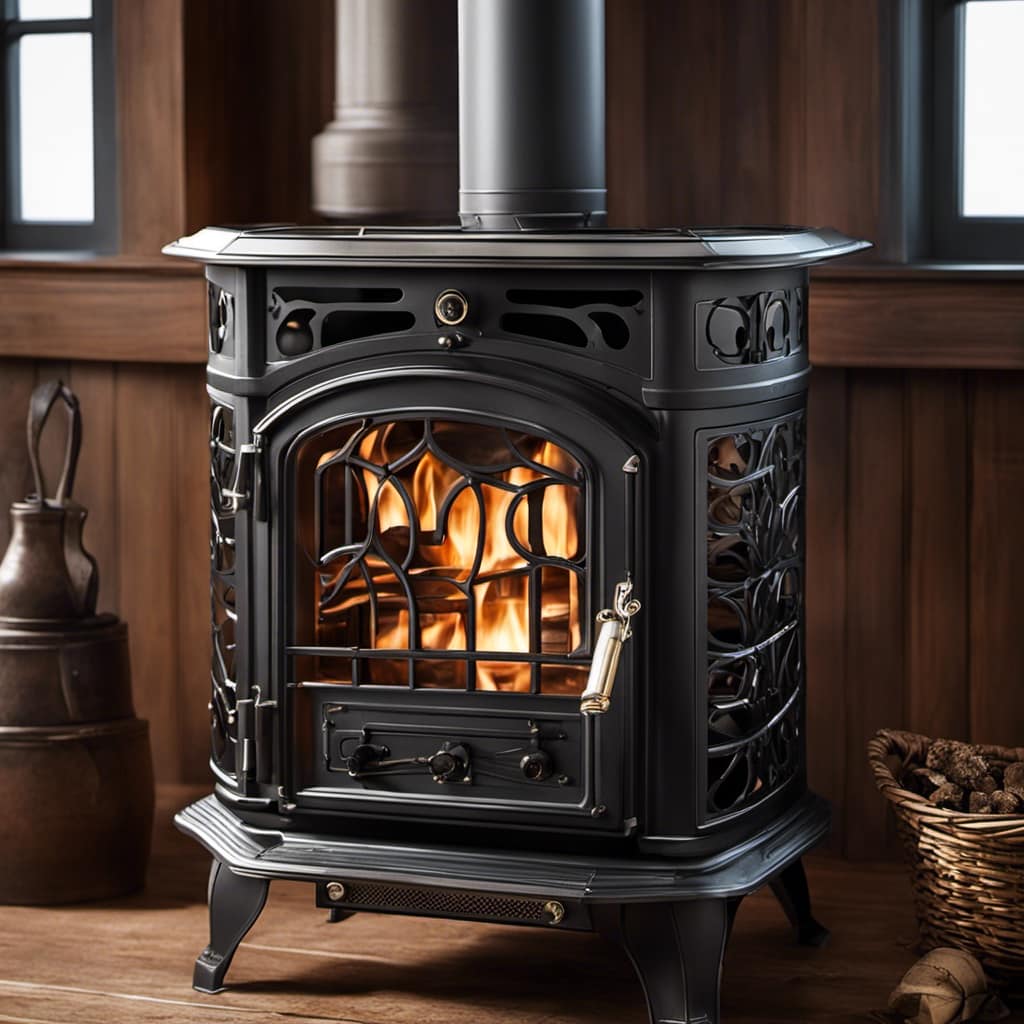
Through the science of heat distribution and smart home design, you can maximize the circulation of warmth throughout your home without the need for a blower.
By following simple tips and tricks, you can make the most out of your wood stove and enjoy a cozy, warm environment.
So, say goodbye to chilly rooms and embrace the power of a blower-less wood stove!
Growing up surrounded by the vast beauty of nature, Sierra was always drawn to the call of the wild. While others sought the comfort of the familiar, she ventured out, embracing the unpredictable and finding stories in the heartbeat of nature.
At the epicenter of every remarkable venture lies a dynamic team—a fusion of diverse talents, visions, and passions. The essence of Best Small Wood Stoves is crafted and refined by such a trio: Sierra, Logan, and Terra. Their collective expertise has transformed the platform into a leading authority on small wood stoves, radiating warmth and knowledge in equal measure.




